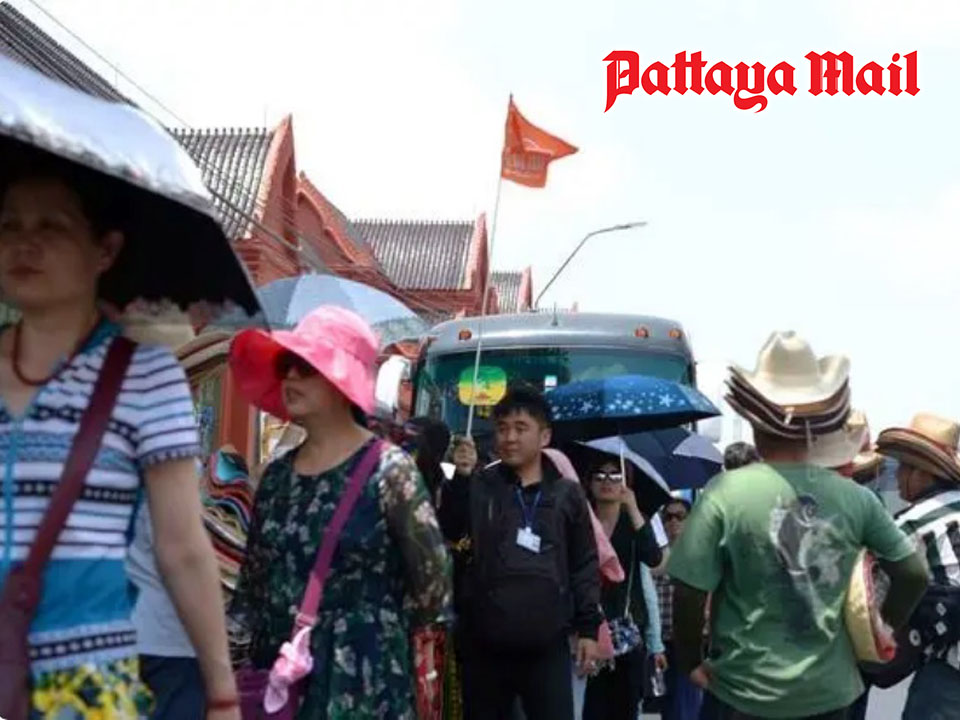
PATTAYA, Thailand – Pattaya, one of Thailand’s most popular tourist destinations, has long benefited from international tourism, with Chinese travelers playing a significant role in its economy. The influx of Chinese tourists, often traveling in large groups as part of package tours, has undeniably shaped Pattaya’s tourism landscape. The question of whether Chinese mass tourism is helping Pattaya can be examined through its economic, cultural, and infrastructural impacts.
Chinese tourists are a vital contributor to Pattaya’s tourism economy. Pre-pandemic statistics showed that Chinese visitors made up the largest group of international arrivals to Thailand, and Pattaya was one of their favorite destinations. They contribute significantly to the city’s revenue by spending on hotels, restaurants, souvenirs, attractions, and entertainment.
Mass tourism has also spurred job creation in Pattaya. From tour guides fluent in Mandarin to small business owners selling local goods, many locals rely on the spending power of Chinese tourists. Moreover, sectors like transportation, hospitality, and retail have seen steady growth due to the large volume of visitors.
The growing influx of Chinese tourists has driven Pattaya to improve its infrastructure. Hotels, resorts, and restaurants have expanded to cater to larger groups and meet the specific needs of Chinese travelers. Attractions such as shopping malls, theme parks, and cultural experiences have been developed or upgraded to appeal to this market.
Additionally, the rise of Chinese tourism has encouraged the use of digital payment systems like Alipay and WeChat Pay, making transactions easier for Chinese visitors and modernizing the local economy.
While the economic benefits are undeniable, the rapid growth of Chinese mass tourism has brought challenges. Critics argue that package tours often favor businesses owned or operated by Chinese nationals, such as Chinese-owned restaurants, tour agencies, and souvenir shops. This could limit the economic benefits for local Thai businesses.
Moreover, the high volume of tourists in a compact area like Pattaya has raised concerns about overcrowding, environmental degradation, and strain on public services. Beaches and other natural attractions have faced pollution issues, while the city’s infrastructure, such as roads and waste management systems, struggles to keep up with the demand.
Cultural clashes have also been a point of contention. Differences in cultural norms and behaviors sometimes create misunderstandings between Chinese tourists and local residents or other visitors, leading to negative perceptions.
Following the COVID-19 pandemic, Pattaya has seen a gradual return of Chinese tourists, though with some shifts. Independent travelers and small groups are increasing, driven by younger, tech-savvy Chinese visitors who seek unique and authentic experiences rather than traditional package tours. This shift could help distribute tourism revenue more evenly and reduce the downsides of mass tourism.
Chinese mass tourism has undoubtedly brought economic benefits to Pattaya, boosting local businesses, jobs, and infrastructure. However, its long-term sustainability depends on addressing challenges such as environmental impacts, cultural tensions, and ensuring that local businesses gain a fair share of the profits.
For Pattaya to continue benefiting from Chinese tourism, a balance must be struck between attracting visitors and preserving the city’s cultural and environmental integrity. By promoting more sustainable tourism practices and diversifying its appeal to independent travelers, Pattaya can maximize the advantages of Chinese tourism while minimizing its drawbacks.










